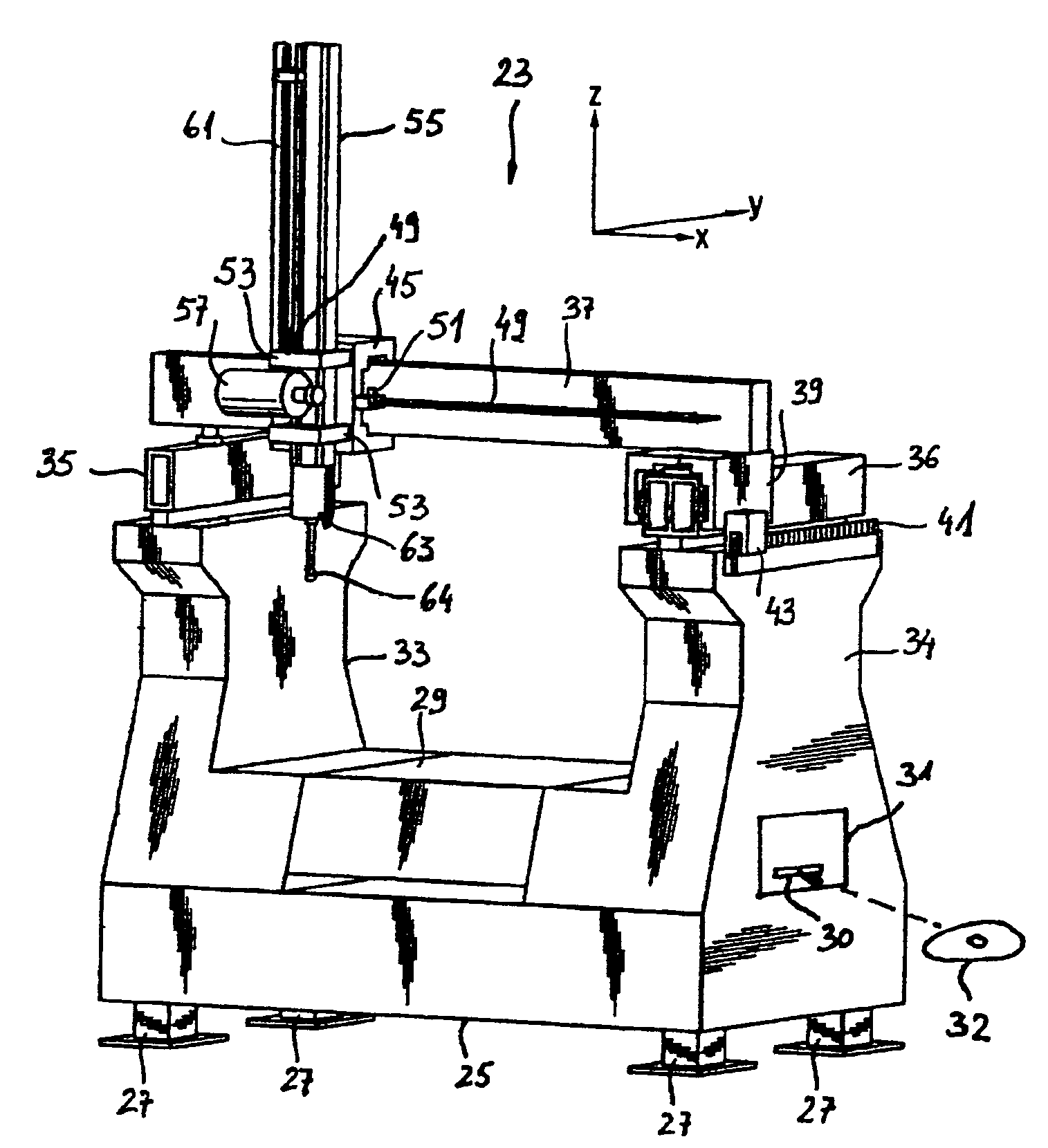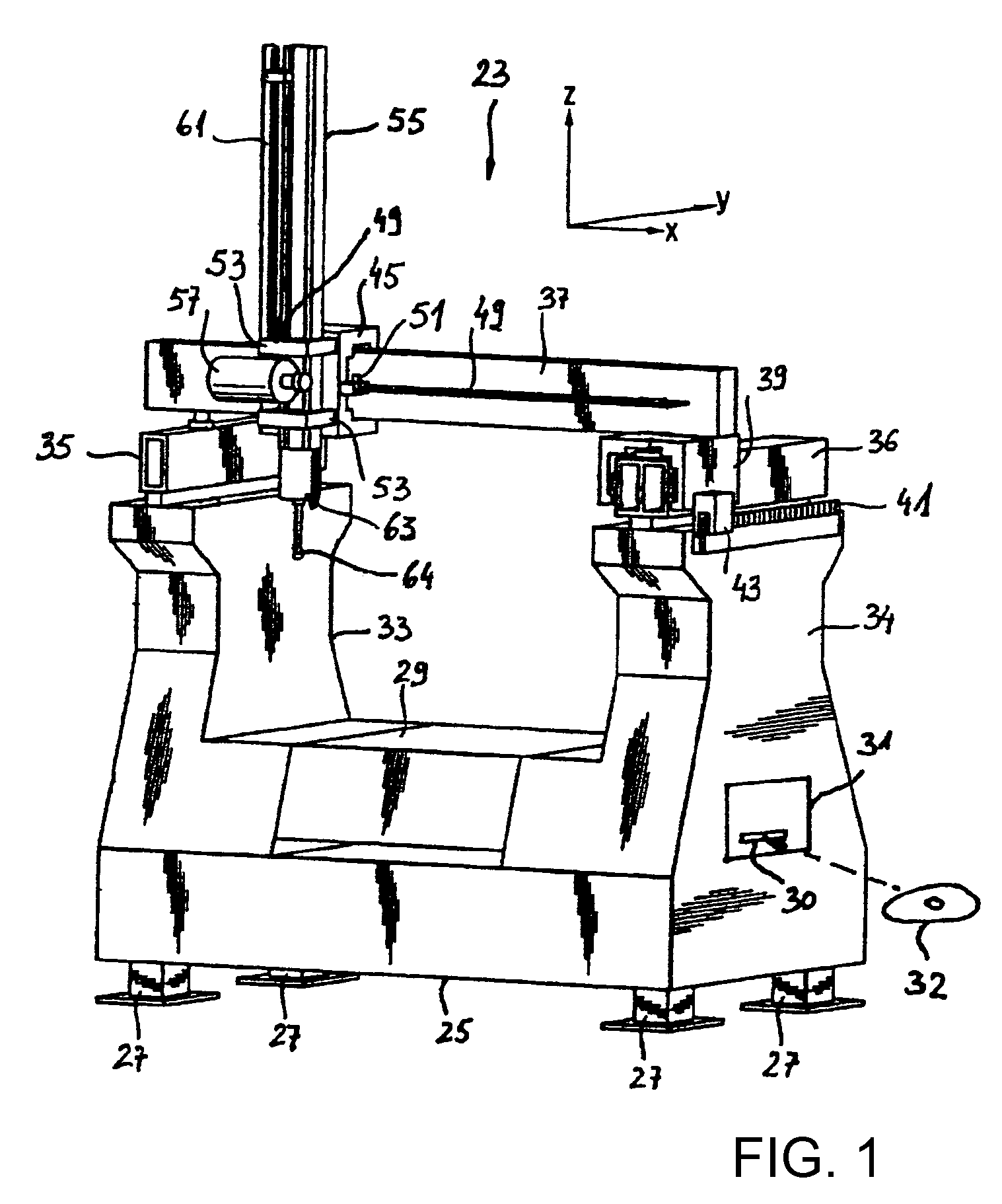Method for scanning a surface with the aid of a coordinate measuring machine and coordinate measuring machine
a technology of coordinate measuring machine and surface scanning, which is applied in the direction of mechanical measuring arrangement, measurement device, instruments, etc., can solve the problems of even more complex relations, and achieve the effect of saving computational costs
- Summary
- Abstract
- Description
- Claims
- Application Information
AI Technical Summary
Benefits of technology
Problems solved by technology
Method used
Image
Examples
Embodiment Construction
[0046]Referring now to the figures of the drawing in detail and first, particularly, to FIG. 1 thereof, there is shown an embodiment of an inventive coordinate measuring machine on an example of a coordinate measuring machine 23 of a gantry configuration.
[0047]The coordinate measuring machine has a base 25 with feet 27. In its middle, the base 25 has a work piece holder or work piece support 29 on which a work piece to be measured is to be arranged. Extending upward on either side of the work piece holder 29 on the base 25 are struts 33, 34 that carry longitudinal guides 35, 36 that are arranged on either side of the work piece holder 29 and extend parallel to one another in a horizontal direction (the Y-direction). Extending horizontally in a fashion orthogonal to the longitudinal guides 35, 36 is a transverse guide 37 in the X direction that is mounted on the longitudinal guides 35, 36 such that it can be displaced linearly in the Y direction. For this purpose, there is provided o...
PUM
 Login to View More
Login to View More Abstract
Description
Claims
Application Information
 Login to View More
Login to View More - R&D
- Intellectual Property
- Life Sciences
- Materials
- Tech Scout
- Unparalleled Data Quality
- Higher Quality Content
- 60% Fewer Hallucinations
Browse by: Latest US Patents, China's latest patents, Technical Efficacy Thesaurus, Application Domain, Technology Topic, Popular Technical Reports.
© 2025 PatSnap. All rights reserved.Legal|Privacy policy|Modern Slavery Act Transparency Statement|Sitemap|About US| Contact US: help@patsnap.com



